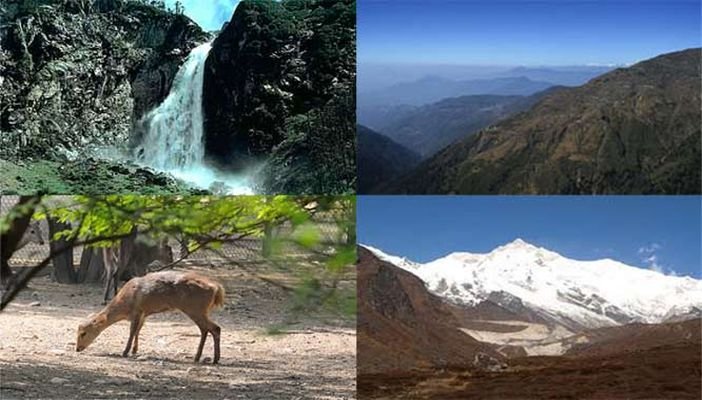A biosphere reserve is an ecosystem with plants and animals of unusual scientific and natural interest. It is a label given by UNESCO to help protect the sites. The plan is to promote management, research and education in ecosystem conservation. This includes the ‘sustainable use of natural resources’.
The Indian government has established 18 Biosphere Reserves in India, (categories roughly corresponding to IUCN Category V Protected areas), which protect larger areas of natural habitat (than a National Park or Animal Sanctuary), and often include one or more National Parks or preserves, along with buffer zones that are open to some economic uses.
Protection is granted not only to the flora and fauna of the protected region, but also to the human communities who inhabit these regions, and their ways of life. Animals are protected and saved here.
The Khangchendzonga Biosphere Reserve has become the 11th Biosphere Reserve from India that has been included in the UNESCO designated World Network of Biosphere Reserves (WNBR).
Khangchendzonga Biosphere Reserve in Sikkim is one of the highest ecosystems in the world, reaching elevations of 1, 220 metres above sea-level.
The core area of the Biosphere Reserve is a major transboundary Wildlife Protected Area. The southern and central landscape, which makes up 86% of the core area, is situated in the Greater Himalayas.
The core zone – Khangchendzonga National Park was designated a World Heritage Site in 2016 under the ‘mixed’ category. Many of the mountains, peaks, lakes, caves, rocks, Stupas (shrines) and hot springs function as pilgrimage sites.
Over 118 species of the large number of medicinal plants found in Dzongu Valley in north Sikkim are of ethno-medical utility. The transition zone is targeted for eco-development activities, afforestation, plantation of medicinal herbs and soil conservation measures.
Reference- PIB News Feed, Wikipedia, UNESCO website






